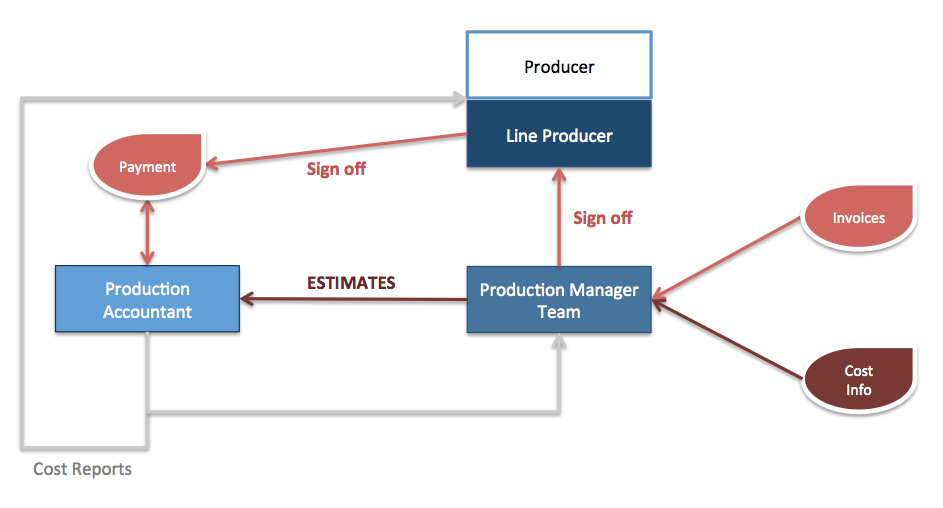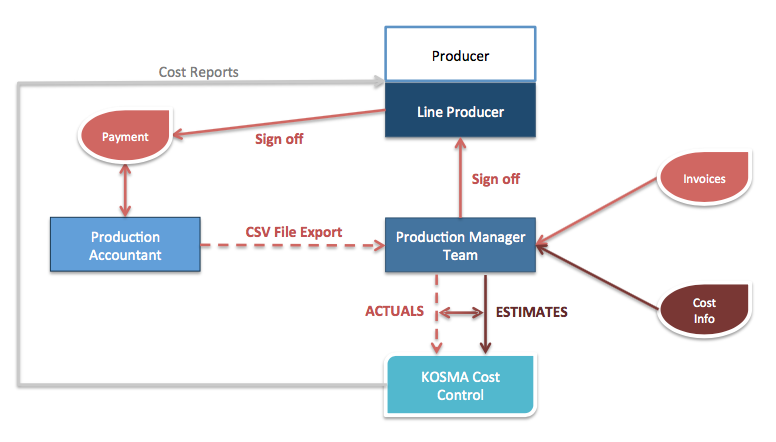One of the biggest challenges in independent film production is the management of film finances. Not only cashflow can be a very serious problem, even more so, staying in control of your costs is.
Written by Valentin Greutert
In the last 20 years, the film business has been exposed to disruptive changes when you look at filming and postproduction technology, but also distribution. Only in the production departments, nothing has changed: people still use Excel for almost everything regarding numbers. At the same time, many production companies struggle with money - because films went over budget, because they have cashflow issues, because their overhead is too high.
Staying on top of your budget is therefore key. Let’s look at some of the problems production companies are facing with that.
Problem 1: Low division of labor
Most independent production companies consist of 1-3 people. This means that the division of labor is very low - and therefore producers must not only know how to develop and finance a film project, they must also know about business administration and have a basic understanding of accounting. There simply is no other person in the company to take that responsibility.
Problem No 2: The art of cost prevision
Cost prevision is a bit like looking into a crystal ball. At any given point in time, we need to know the final cost of the project in the future in order to make the right decisions today. Consequently, cost prevision must always be a mix between actual numbers from the past and estimates from the future. But how to track them transparently? A task almost impossible with Excel.
Problem No 3: Inefficient workflow
The standard workflow in production departments often looks like the graph below. On the one hand invoices are coming in to the production management team, they sign them off, the producer signs them off, the production accountant will pay them and book them. Those are the actuals. On the other hand cost information (=estimates) are gathered every day by the production management team. To create a cost report, the production manager will once in a while sit down with the accountant and tell him about new estimates. Then the accountant will put together some Excel sheet.
From an efficiency point of view, this workflow does not make sense. Accountants are working with actuals, not estimates. They also don’t „understand“ the estimates, because they are not production managers. So the cost reports they eventually produce are mainly a bunch of numbers that do not provide the transparency needed to make informed decisions. You can't even be sure that all the totals are correct, as we all know how easily mistakes happen in Excel sheets.
So what is the solution?
At KOSMA we have been putting a lot of thought into this. That’s how we created the Cost Control module. For every account in your budget, you can add cost items - either as estimates or as actuals. Whenever the production team gathers new information, they can add it to Cost Control as estimates. And whenever the accountant has paid and booked new data, they can import it to Cost Control as actuals. Of course you can attach invoices or other documents to each of your cost items. And you can track spending effects etc.
Working with KOSMA allows you to create most accurate cost reports at any time, including transparent information on how and where costs are expected. Check out the graph below to see how the workflow is adapted. Cost reports are now provided by the production team instead of the accountant, because the production team is at the source of all information. The accountant only takes care of actuals: invoices, salaries and so on and then exports this data for the prdocution team. All estimates are handled by the production team and KOSMA.
I have personally worked this way on my last couple of productions, ranging from documentaries with a budget of 400’000 Euros up to feature films of more than 5 million Euros. KOSMA provided us with unmatched transparency, proved to be efficient and gave me as a producer a feeling of safety because I knew at every point where I stood. It'a a whole different thing working with a software tool that is dedicated to film production.




Add new comment